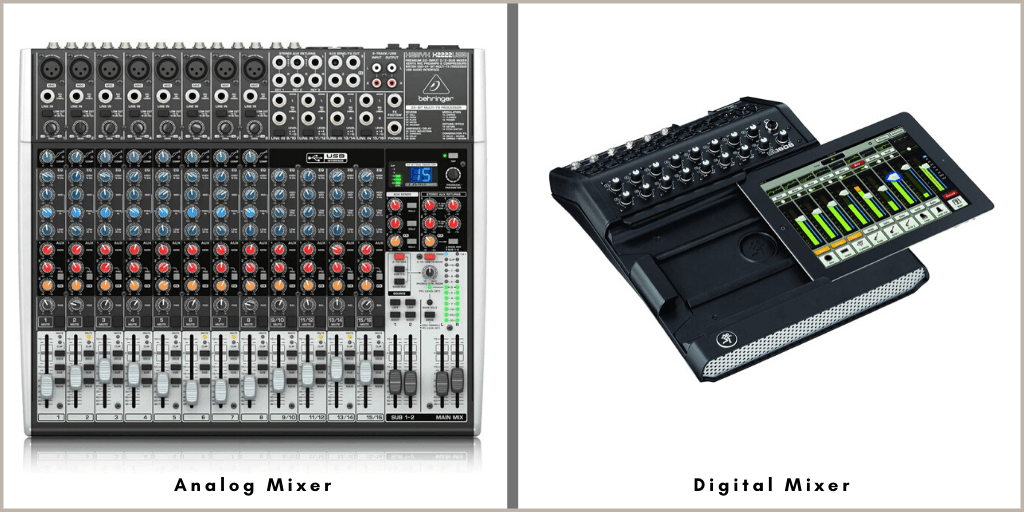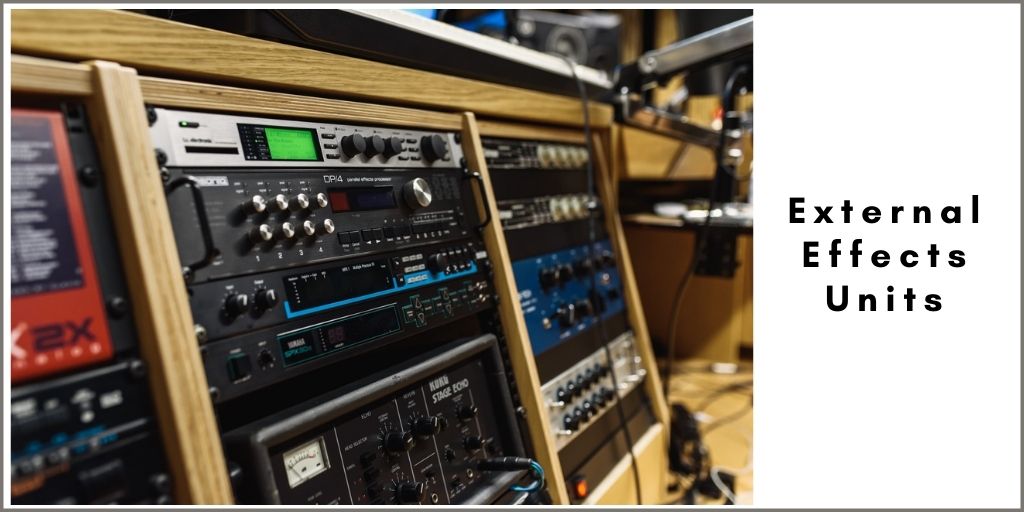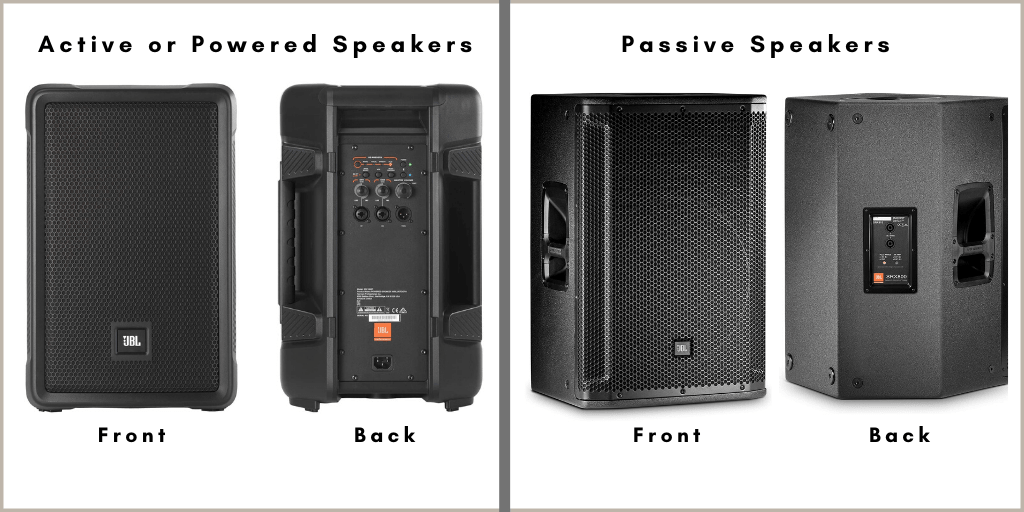Are you ready to wow your audience with a live band that sounds just right?
Whether you’re interested in managing your own band’s live gear or you’re transitioning into a live audio career, there’s a lot to consider in terms of putting on a show with enviable acoustics.
For instance, there are endless options when it comes to amplification of your live band. You can choose from simple self-contained personal pa systems to large systems with multiple components and serious power.
Read on to learn all about live gear and how to decide which equipment to choose for your own unique setup. By the end of this guide, you might just be a live audio pro.
Mixers

The mixer is the central hub of your pa system. Whether we’re talking about a simple eight-channel mixer with a few basic controls like gain and equalization, or a 64 channel mixer with advanced features onboard, it’s essential to have a mixer that can take advantage of the acoustics of your performance venue.
Basically, a mixer takes all of your various inputs like microphones, line-level instruments, and playback devices and disperses them into main outputs and monitor outputs. This creates a balanced sound. The main outputs go to the various speakers and subwoofers if you are using them. The audio that comes out of these speakers is what the audience hears.
The monitor outs, or the monitor mix, goes to the performers on stage so they can hear themselves and hear each other. Having two separate mixes is important because usually, the performers need a different mix than what the audience needs to hear.
Since the mixer is the central audio hub of your pa system, we have dedicated a full article explaining each control in more detail.
Unpowered Mixers
If the mixer is unpowered, it does not have its own internal amplifier. If you choose this option, you will need to either use an external amplifier with passive speakers or active speakers that contain their own power amplifiers.
Powered Mixers
Unlike the unpowered mixer, a powered mixer has its own power amplifier. If you are using a powered mixer, it is important that you only connect it to passive/unpowered speakers. IF you connect a powered mixer to an external power amp or to active speakers, it is highly likely that you would permanently damage your equipment.
External Rack Effects Units

While many modern mixers have internal digital effects processors, you may still choose to use certain pieces of outboard rack gear for compression, feedback suppression, or various external effects. These might include reverb, delay, and chorus for example.
External effects units are normally connected using channel inserts or auxiliary channels on your mixer.
Active Speaker Cabinets

Active speaker cabinets have their own internal power amps. These are ideal if you’re looking for a compact setup. You don’t have to worry about lugging around a rack with a power amp along with your speakers and other pa equipment.
Keep in mind that active speakers are meant to receive line-level signals, so be sure not to run the output from a powered mixer into an active speaker.
Passive Speaker Cabinets
Passive speakers do not contain their own power amp. Therefore, they need to be fed by a powered mixer or an external power amplifier.
One advantage of passive speakers is that you can have a spare power amp in case your external power amp fails. This is far more practical than having spare active speakers on hand.
The Monitor Mix
Depending on the size of the venue and your budget, the front of house engineer (AKA yourself) may also handle the monitor mix. This is often accomplished by setting up a monitor mix for each performer during soundcheck. Then, each monitor mix is adjusted during the performance.
Adjusting the monitor mix for each performer individual is vital because this enhances the band’s sound overall. For instance, if your vocalist hears too much of the drums and not enough of the base, her vocals might sound too punchy. In short, it’s very important to invest in quality onstage monitors for a live show.
In-Ear Monitors
In-ear monitors use a wireless receiver which is battery powered. The performer can adjust the overall volume via a control on his or her own receiver.
There are a couple of important advantages to using in-ear monitors. Since they are earbuds instead of speakers, they can help clean up the stage. In other words, they can help prevent bleed and feedback, and the performers can get clearer audio feedback.
Wedge Monitors
Although they are an old school approach, some performers prefer wedge monitors. These are onstage speakers that face the performers instead of facing the audience.
Some performers don’t like in-ear monitors because they feel too isolated or that they are losing the connection to their audience. If your band collectively prefers to be more engaged with the audience, wedge monitors may be best.
You can check out our article about setting up stage monitors by clicking the link.
All In One pa systems for Your Live Band

All in one pa systems, also called solo pa systems, are a very modern and very compact approach to live audio gear. They feature a basic mixer, power amp, and a set of speakers in a single unit.
They are popular thanks to their portability, affordability, and easy setup. Many all-in-one pa systems feature at least two XLR/Line inputs with at least basic EQ and reverb.
It is not uncommon to find these units equipped with Bluetooth as well as an auxiliary input. You can use them for playing backing tracks or music between sets. Many of these all-in-one pa systems are expandable as well. This means that if you land a gig at a larger venue, you can hook two of them together to accommodate a larger audience.
Time to Jam
Now that you know how to choose and set up the gear for a live band, what else piques your interest in terms of audio gear?
Whether you’re an audiophile and a musician or you’re studying to be an audio engineer, our site is a great resource for all of your audio needs.
Come back to our blog regularly to learn more about the latest audio gear and for tips on which brands and products to choose for your setup. Feel free to contact us with any questions about audio gear in general, or to inquire about where you can order the gear we promote.